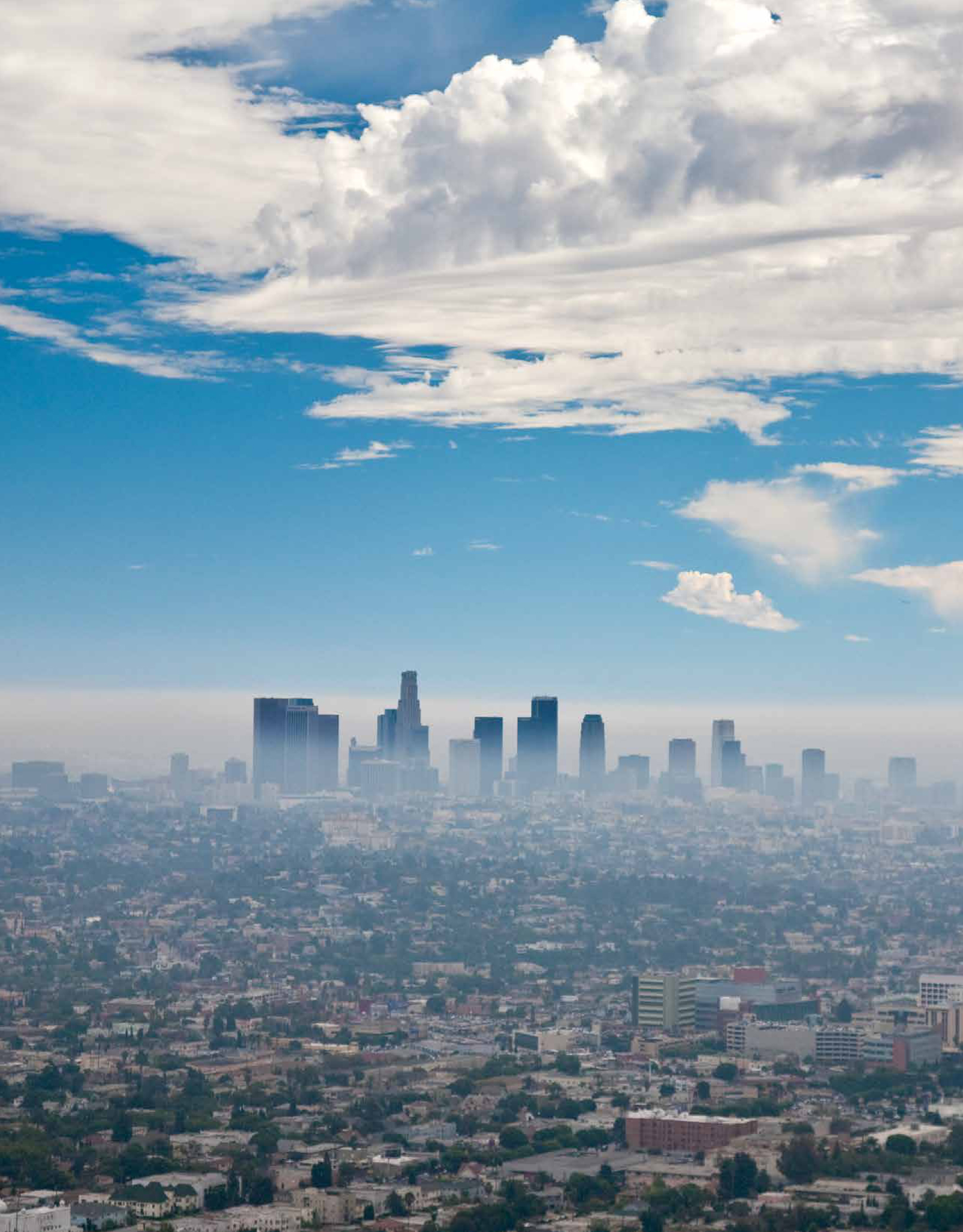21.1 Kids on the frontlines of asthma research
| CHAPTER 21 | AIR POLLUTION |
THE YOUNGEST SCIENTIST
370
371

CORE MESSAGE
Air quality issues span the globe and have serious health effects for humans and other organisms; they also take an economic toll on individuals, industry, and society. Though there are natural sources of air pollution, most is caused by human actions. Pollutants generated in one area can travel great distances to affect other places. Policies that restrict air pollution, and new technology to reduce it at the source, can help us address air pollution problems.
GUIDING QUESTIONS
After reading this chapter, you should be able to answer the following questions:
 What is air pollution and what is its global impact?
What is air pollution and what is its global impact? What are the main types and sources of outdoor air pollution? What are the common types of air pollutants regulated in Canada?
What are the main types and sources of outdoor air pollution? What are the common types of air pollutants regulated in Canada? What are the health, economic, and ecological consequences of air pollution?
What are the health, economic, and ecological consequences of air pollution? What are the main sources of indoor air pollution in developed nations such as Canada and the United States? What about developing nations? What can be done to reduce these pollutants?
What are the main sources of indoor air pollution in developed nations such as Canada and the United States? What about developing nations? What can be done to reduce these pollutants? What are the economic and societal costs and benefits of mitigating air pollution?
What are the economic and societal costs and benefits of mitigating air pollution?
372
For 10-day stretches during 2003 and 2004, forty-five asthmatic kids from smoggy Los Angeles County, some as young as 9, carried more than books in their backpacks. The kids, from two regions of the county, wore backpacks containing small monitors that sampled the air around them continuously as they went about their daily lives—going to class, playing with friends, having dinner with their families.
Children have a lot to teach us about asthma. It’s not just that the respiratory disorder more commonly afflicts kids than adults—which it does. (In the United States, 10% of children have asthma, compared to 7.7% of adults. In Canada, about 15% of children have asthma, as do 8.5% of adults.) Or that research on children with asthma is on the rise. No, in fact, children are actually conducting some of the seminal research on asthma themselves.
And those personal air monitors are far more accurate than measurements taken at local monitoring stations, explains Ralph Delfino, an epidemiologist at the University of California, Irvine, who with his colleagues, recruited the students to help collect the data. “A monitoring station can be many miles from where the subject lives, where they go to school, etc.—so that measurement may not represent their actual exposure very well,” he says. The air monitors used in Defino’s study detected levels of harmful pollutants in the air surrounding each individual child.
The children selected for the experiment were all currently being treated for mild to moderate asthma and the area they all lived in had significant vehicle air pollution. Each child wore a backpack containing a monitor that would continuously sample the air around the child for 10 consecutive days; the monitor measured the amount of small particles and nitrogen dioxide (NO2), both of which are commonly present in vehicle emissions and are known to irritate lung tissue. Exposure to these pollutants can trigger asthma symptoms such as wheezing, coughing, or shortness of breath in sensitive individuals.
Ten times a day, the children exhaled into a special bag that assessed their breath for nitric oxide (NO), a chemical marker of airway inflammation—a telltale symptom of asthma.
When the 10 days were over, Delfino compared the types of pollutants to which the kids were exposed with their nitric oxide levels at similar points in time. The goal was to paint a picture of the types and amounts of pollutants that exacerbate asthma.
WHERE IS LOS ANGELES, CALIFORNIA?

Asthma is a respiratory ailment marked by inflammation and constriction of the narrow airways of the lungs. Delfino’s work is important in part because asthma is one of the most common chronic childhood diseases in the United States, Canada, and other developed nations and a major cause of childhood disability. The United Kingdom has the highest incidence of asthma, with more than 15% of its population diagnosed in 2006 (compared to 14.1% in Canada and 10.9% in the United States). Developing nations are also seeing a rise in asthma, especially in urban centres. In all areas, asthma rates are likely underdiagnosed.
In North America, asthma is the leading cause of school absences. The prevalence of childhood and adolescent asthma has increased by 25-75% per decade during the period since 1960. Currently, 35.5 million people in the United States and Canada are diagnosed with asthma. Because there are more adults than children, overall more adults have asthma, but a larger percentage of children have the disease.
373

374
Researchers believe that air pollution—contaminants, either from natural sources or human activities, that cause health or environmental problems—may play a key role in the recent asthma spike. In addition, air pollution has been linked to cancer, infection, and other respiratory diseases—and it not only harms us, but also plants, animals, and even our buildings, bridges, and statues.